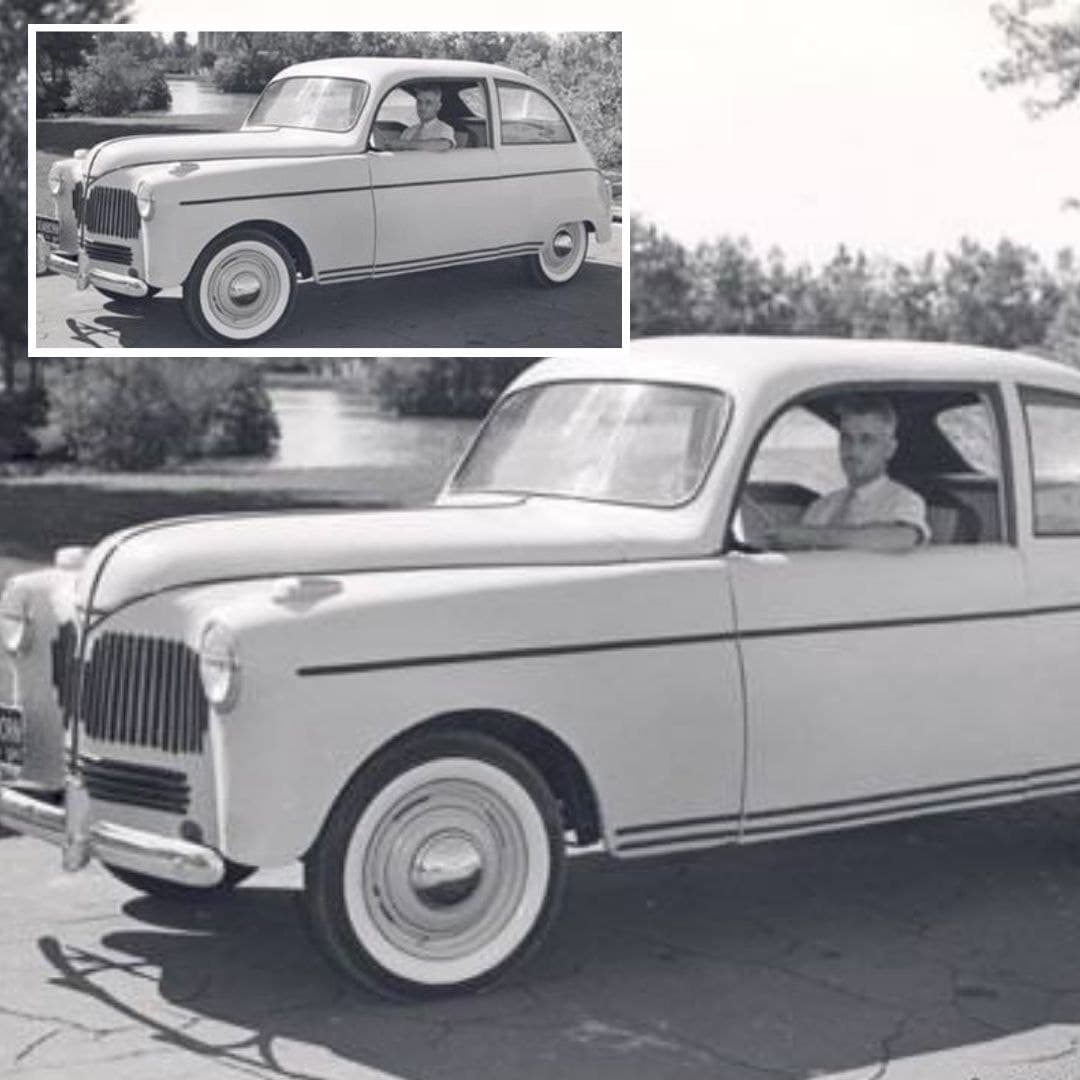
Image Credit: Wikipedia
How WWII Stopped Henry Ford's Soybean Car Fom Taking Off
Writer: Neelima Mishra
Guru Govind Singh Indraprashtha University in New Delhi is where Neelima Mishra is doing her master's degree. She graduated from Delhi University with a bachelor's degree in journalism (hons.). She is pursuing a corporate communication specialisation at IP University.
Others/World, 19 Oct 2021 12:28 PM GMT
Editor : Madhusree Goswami |
A mountain girl trying to make it big in the city. She loves to travel and explore and hence keen on doing on-ground stories. Giving the crux of the matter through her editing skills is her way to pay back the journalism its due credit.
Creatives : Neelima Mishra
Guru Govind Singh Indraprashtha University in New Delhi is where Neelima Mishra is doing her master's degree. She graduated from Delhi University with a bachelor's degree in journalism (hons.). She is pursuing a corporate communication specialisation at IP University.
Henry Ford experimented with producing plastic parts for automobiles in the early 1940s. As a result of these studies, a "plastic automobile constructed from soybeans" was created. The outbreak of World War II suspended all auto production, and therefore the plastic car experiment.
Plastic is utilised in nearly every industry, including packaging, construction, textiles, consumer goods, transportation,electronic equipment, and industrial machinery. Transportation of people and commodities that is both cost-effective and safe is critical to our economy.
As a result of their lightness, plastics are extremely useful in the transportation business. They are being used in a rising number of building applications, are a versatile material with high strength-to-weight ratio, durable, cost-effective, low maintenance, and corrosion resistant.
Almost every part of our life, at home and at work, at work and at play, is powered by electricity. And where there is electricity, there is also plastic. It is an excellent material for packing products. Plastic is adaptable, hygienic, lightweight, flexible, and long-lasting. It is the most widely used material in the world utilised for packaging items such as containers, bottles, drums, trays, cartons, and cups. However, its use has resulted in immense pollution.
Plastic waste can be found all across the world, from the Arctic to the Antarctic. It jams city drains, litters campgrounds and national parks, and is even accumulating on Mount Everest. However, due to runoff and our habit of dumping it into the nearby river or lake, plastic is becoming more prevalent in the world's oceans.
Plastics Are One Of Fracking's Key Products
We already know that fracking is bad for the environment: it releases toxins into the water, soil, and air; it creates underground cavities that collapse into sinkholes; and it increases pressure in underground rock formations, destabilising them and causing earthquakes, even in areas where earthquakes are rare. To add insult to injury, one of fracking's main products is plastics. In essence, fossil fuels extracted from shale and other rock formations are converted into resin pellets, which are then used to make ever more plastics, plastics that are readily thrown, and that are typically designed to be single-use.
People Aren't The Only Ones Who Are Killed By Plastics
The consequences on wildlife caused by ingesting or becoming entangled in plastic have been recorded more widely and frequently than ever before in recent months, resulting in a public outcry and protests. These terrible incidents are unsurprising given that there is an estimated 270,000 tonnes of plastic floating in the world's waters, posing a threat to 700 marine species. Furthermore, there is mounting evidence that plastics play a role in the rapid extinction of species.
Not All Plastic Is Recyclable
The terms "break down" and "biodegradable" (or "compostable") are frequently misunderstood. When plastics are broken down, it simply implies that one large piece of plastic is broken down into a number of smaller bits. Smaller animals can eat these smaller particles of plastic, but they are still indigestible. A small percentage of plastics are "compostable" or "biodegradable," meaning they can be broken down to their chemical components in a compost bin at home. Other plastics can only be composted successfully in industrial or municipal facilities once they have been isolated from non-biodegradable plastics.
Henry's Ford 'Soyabean Car'
Henry Ford experimented with producing plastic parts for automobiles in the early 1940s. As a result of these studies, a "plastic automobile constructed from soybeans" was created. Despite the fact that this car was never included to a museum's collection, it is nevertheless a good example of inventive design. The "Soybean Car" was actually a plastic-bodied car that Henry Ford revealed at Dearborn Days, an annual community celebration, on August 13, 1941.
Why He Built Such A Car
Henry Ford wanted to develop this car for a variety of reasons:
- He was seeking for a project that would integrate industrial and agricultural products
- He also claimed that the car was safer than standard steel cars because of the plastic panels, and that it could even roll over without being crushed.
- There was a metal shortage at the time, which was another cause. Henry anticipated that his new plastic substance would eventually replace the traditional metals found in automobiles.
The outbreak of World War II suspended all auto production, and therefore the plastic car experiment. A second unit was in production at the time the war broke out, but the project was abandoned. By the end of the war, the idea of a plastic car had fallen through the cracks due to energy being directed towards war recovery efforts.
After the discovery of a 'soyabean car' in 1940s consumption of plastic expanded in the country during World War 2. In 1932, neoprene was created, followed by polythene in 1933 and Perspex in 1934. Nylon, one of the most well-known fully synthetic fibres, was developed in 1938 at a cost of $10 million. Nylon was used in toothbrush bristles and to make stockings in its first year of production. In 1938 alone, 64 million pairs of stockings were produced. During World War II, nylon was also employed by the military for gearing wheels in vehicles and parachute cables.
Plastic as a whole had a crucial role in WWII. Perspex was utilised to create plane cockpits, polythene was used to insulate radar, and synthetic rubber for tyres was made from plastic. Through manufacturing and waste management processes, the plastics industry and consumption habits in the United States after WWII have contributed considerably to hydrocarbon emissions, ecological violence, and the persistence of global structural violence. Recycling, prohibitions on some plastic classifications, UN Sustainable Development Goals, informed consumers, and the non-profit sector are all attempting to restore ecological peace. While this is an important step for the planet's health, we must also change the underlying assumptions.
Also Read: Chennai: Chain Snatching Suspect Tracked By Drones; Shot Dead by drones
 All section
All section














